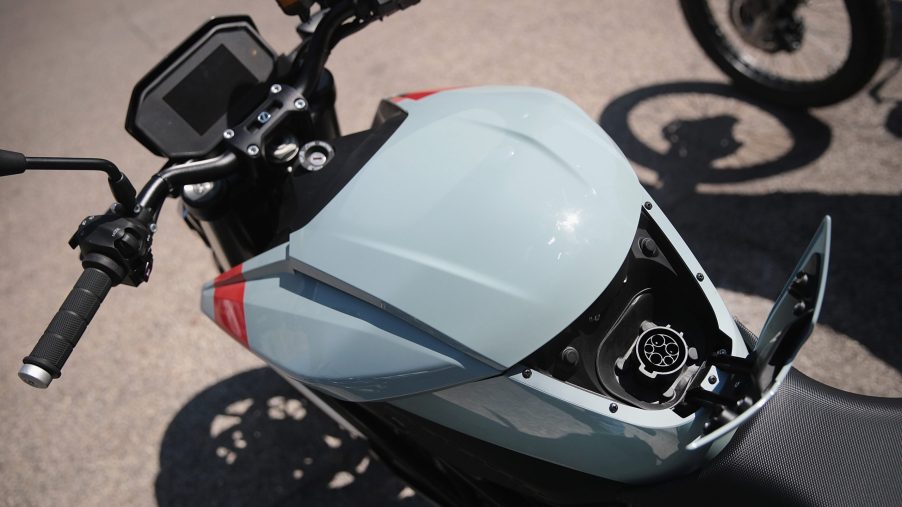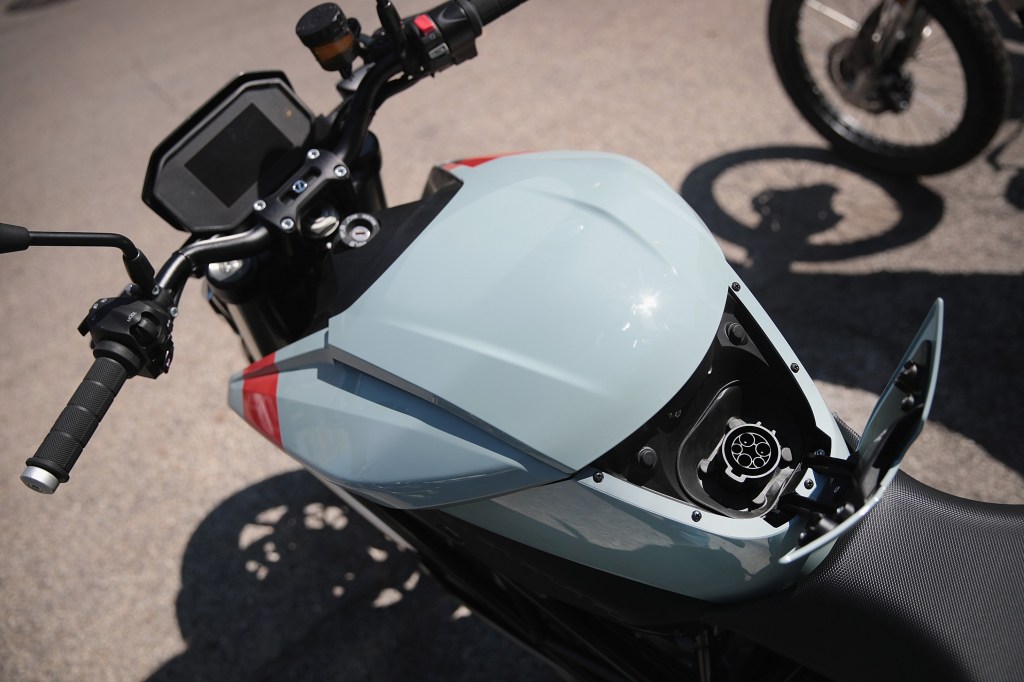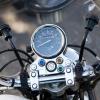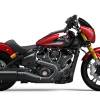
How and Where Do You Charge an Electric Motorcycle?
Electric motorcycle charger and charging guide highlights:
- Electric motorcycles use the same standardized charger plugs as electric cars, though not all bikes can use Level 2 or 3 chargers
- With how most riders use electric motorcycles, Level 1 chargers are often more than sufficient
- If you want DC fast-charging capabilities, your only options right now are the LiveWire One and any Energica model
Although electric motorcycles haven’t achieved Tesla levels of market share yet, two-wheeled EV numbers are growing, and not just because of their green appeal. Battery-powered bikes are quick off the line, don’t blow out your eardrums, and don’t require clutch lever mastery. But riding one means dealing with today’s confusing and often frustrating EV charging landscape. However, hooking an electric motorcycle to a public or home charger doesn’t have to be difficult.
Do electric motorcycles use the same charger plugs as electric cars?

One of the most frustrating aspects of electric car ownership is finding a charging station only to find you don’t have the right plug. Fortunately, electric motorcycles don’t have proprietary public chargers like the Tesla Supercharger network. But that doesn’t mean all electric bikes can plug into all chargers.
Firstly, all electric motorcycles come with cables to plug into Level 1 chargers, i.e., home outlets. These are basically overgrown laptop chargers and often proprietary to a specific make. For example, a LiveWire One couldn’t use a Zero cable, and vice versa. But you could likely charge one Zero bike with another Zero’s cable.
Meanwhile, Level 2 and Level 3 chargers require special plugs to use. The Level 2 one is called ‘J1772’ after its SAE standard and features a bunch of small pins organized in a circular socket. Add two DC fast-charge pins underneath and you get the Level 3 Combined Charging System (CCS) plug. Keep in mind that these are the ‘standard’ plugs for U.S.-market EVs; the EU, Japan, and China have other standards. The Nissan Leaf briefly used one of those, the CHAdeMO plug, but it’s now switched to J1772.
Here’s where the charger complications start for electric motorcycles. The good news is if your bike can use Level 3 chargers, it can also use Level 2 ones. The bad news, though, is that not all two-wheeled EVs can use Level 2 chargers.
You can charge an electric motorcycle at home even without a Level 2 home charger
Technically, you can own an electric car without setting up a Level 2 home charging station, but that makes life less convenient. But with electric motorcycles, it’s a bit more complicated.
For example, Cake’s bikes aren’t Level 2 compatible: it’s the wall outlet or nothing. In addition, while the Zero SR/F can use Level 2 chargers as standard, other Zeroes need optional Charge Tanks to do the same. Also, even if you plug the LiveWire One, Harley-Davidson’s electric motorcycle, into a Level 2 charger, it won’t charge any faster.
However, electric motorcycle batteries are significantly smaller than an electric car battery pack, yet both EVs have similar onboard chargers. As a result, even on 110-volt wall power, the bike ‘refuels’ faster than the car. When one MotorBiscuit editor tested a Mercedes-Benz EQS 450+, she found that it regained 15 miles after 10 hours of Level 1 charging. But in that time, on the same outlet, you could 100% recharge a 2022 Zero SR twice.
Plus, Cake motorcycles might be Level 1 only, but the Kalk Ink& dual-sport fully recharges in three hours. Furthermore, it and all other Cakes have removable batteries. So, if you’re commuting to work, you can leave the motorcycle outside and charge the battery at your desk.
Now, electric motorcycles do benefit from Level 2 home chargers. I already mentioned Zero, but Energica’s bikes are Level 2 compatible as standard. So is the new BMW CE 04, though you need an optional Level 2 charging cable. But if you just ride to and from work during the day and always plug in at night, a home charger is arguably unnecessary. And if you’re still worried about charging speed, some companies, like Zero, offer extra external chargers.
Can any bikes use Level 3 charging stations?
While home and office charging should suffice for short-distance rides, not every electric motorcycle rider stays in the city. Yet even if they do, sometimes circumstances require topping up the battery at a public charging station. And that’s where being limited to Level 1 or 2 charging speeds makes life difficult for the electric rider. Plus, as RideApart discovered on a long-distance Zero SR/F trip, charge time estimates aren’t always real-world accurate.
The solution here, as it is with electric cars, is DC fast charging, aka Level 3 charging. Rather than a few hours, getting meaningful range back takes maybe 30 minutes, if that. As of this writing, though, most electric motorcycles sold in the U.S. can’t plug into Level 3 public chargers. But there are a few that can.
The first is the LiveWire One, which is compatible with all CCS Combo 1 charging stations. And you can find compatible stations through Google Maps or the LiveWire app. LiveWire claims the One goes 0-80% charge in 40 minutes and 0-100% in 60 minutes. However, Roadshow found that fully charging the bike often required unplugging and re-plugging the charger.
The other, or rather others, are Energica’s motorcycles. All the Italian brand’s bikes accept Level 3 charging, again with CCS Combo 1 plugs. And, like the One, an Energica motorcycle regains 80% charge in 40 minutes.
Admittedly, figuring out the charger situation for an electric motorcycle requires a little homework. But in the end, just like with electric cars, it just requires knowing what you’ve got.
Follow more updates from MotorBiscuit on our Facebook page.


